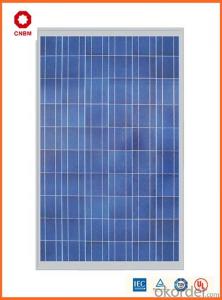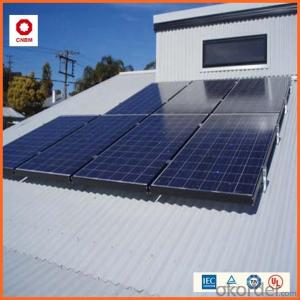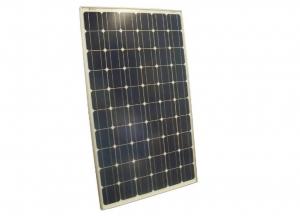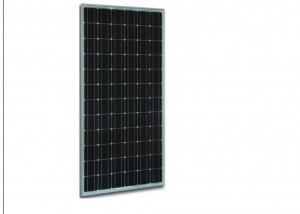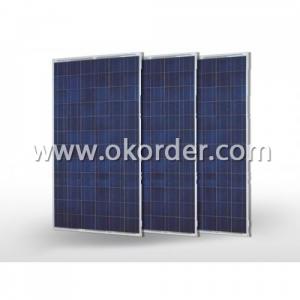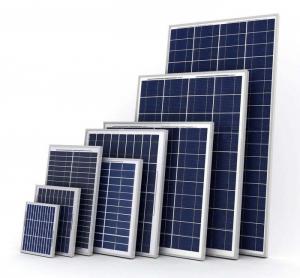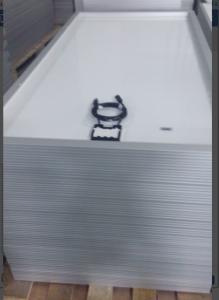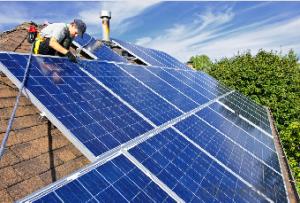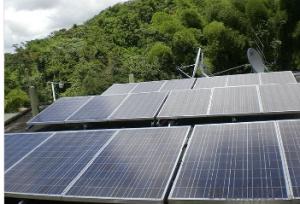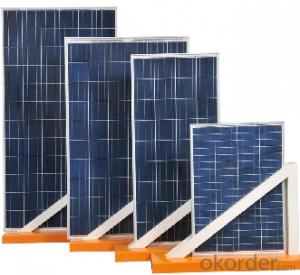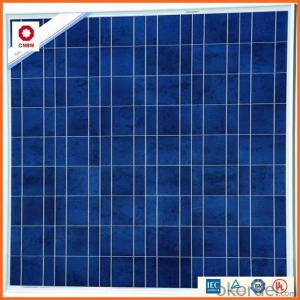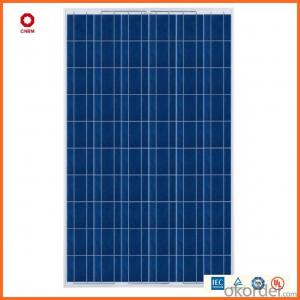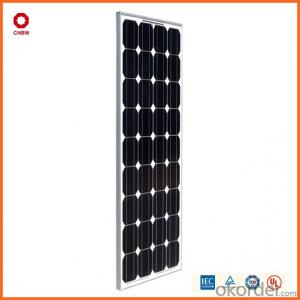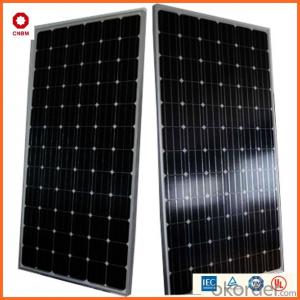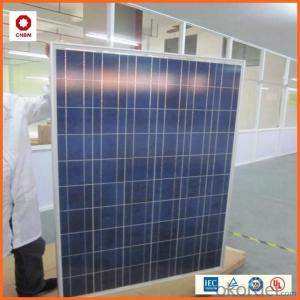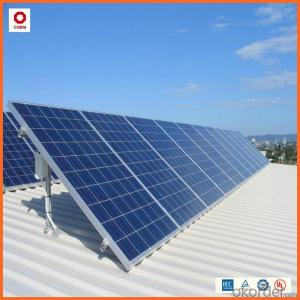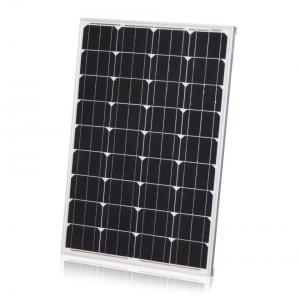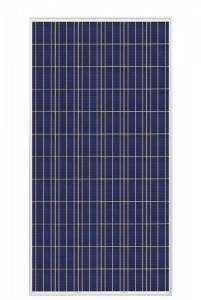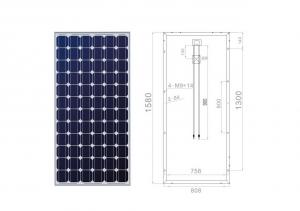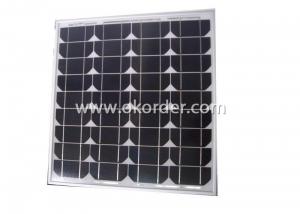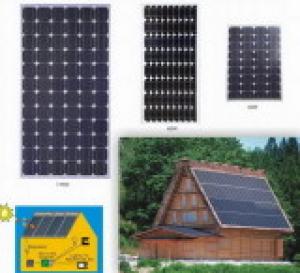Best Solar Panels To Buy for Home - 80w Monocrystalline Silicon Solar Module with CE/IEC/TUV/ISO Approval Standard Solar
- Loading Port:
- China main port
- Payment Terms:
- TT OR LC
- Min Order Qty:
- 100 watt
- Supply Capability:
- 1000000 watt/month
OKorder Service Pledge
OKorder Financial Service
You Might Also Like
Specification
Solar 80W Monocrystalline Silicon Solar Module With CE/IEC/TUV/ISO Approval Standard Solar
CNBM International Corporation is a professional solar panel manufacturer in China for CNBM brand . Silicon panel ( silicon module), as our main product, has high quality and good service. Our products are very popular in Europe, Australia, England, Middle East, Mexico, Argentina, Chili, Singapore and Africa.
Furthermore, our products have gained international authorized certificates like TUV, UL and CE.
China National Building Material (Group) Corporation (CNBM), established in 1984, is one of the largest State-owned group corporations of building & mechanical materials which specializes in the design, manufacturing and distribution of building materials in the world.
As the whole world turns “green”, CNBM enters into the Photovoltaic Industry in 2005.After 6 years' fast growth, now our annual capacity is 500MW solar panel and 500MW solar cell.
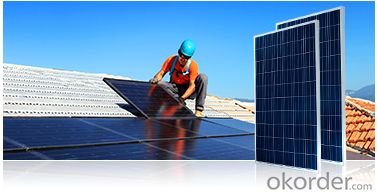
We now provide
• Monocrystalline Solar Panel
• Polycrystalline Solar Panel( multicrystalline silicon Solar Panel)
Features of our products:
Long lifespan: 25Years lifetime guarantee, 12years workshop warranty. 90% output in first 10years. 85% output in next 15years.If module fail during warranty period, please contact local dealer, and provide the warranty card to replace the products.
Solar panels are withstand extreme working condition (from -40°C to 120°C)
Grade A solar panels rated by TUV.
High transformation efficiency solar panels
New UV reflector protected Layer
Maintenance free solar panels
No exposed metal parts
Custom-made available
100% EL TEST before and after laminator for each solar panels
TUV,MCS,CEC,IEC61215,IEC61730,CE,UL approved solar panels
CHUBB insurance company to guarantee the quality of solar panels
Bankable solar panels in German,Italy,UK,Denmark country
As a professional Solar Panel manufacturer and Supplier in China, we have our customers come around the whole world and our specialization has got a worldwide recognition. Meanwhile, with our superior quality, competitive price, prompt and excellent service, As main role in trade section of CNBM Group, CNBM International Corporation supplies products including Monocrystalline Solar Panel, Polycrystalline Solar Panel ( multicrystalline silicon Solar Panel) have received and enjoyed famous reputation in many countries and regions in the world.
- Q: Is it really possible for me living in Denver to build and install and setup my own solar panel to help make electricity for my home?
- DIY okorder
- Q: Can solar panels be used to power a public transportation system?
- Yes, solar panels can be used to power a public transportation system. By installing solar panels on the roofs of public transportation vehicles or at transportation hubs, the energy generated can be used to charge electric buses or trains. This reduces reliance on fossil fuels and helps to create a more sustainable and environmentally friendly transportation system.
- Q: Can solar panels be used to power a bank?
- Yes, solar panels can be used to power a bank. Solar panels can generate electricity by converting sunlight into energy, which can then be used to power various electrical systems, including those in a bank. By installing solar panels on the roof or surrounding areas of a bank, it is possible to generate clean and renewable energy that can offset the bank's electricity consumption and reduce its carbon footprint.
- Q: i attached a usb charger to my solar panel(it has an output of about .2 volts) but i read on my multimeter its only using about 8 volts however on the conventional wall charger that i use to charge it has an output of about 5. volts.... i believe that my mp3 player is not charging it does not display the charging icon when it is on or off ....is this becuase the output is higher ? do i need to install a volt dropping diode to prevent it from putting to much energy at once? (my mp3 charges fine on the wall charger but does not seem to respond to the solar panel so it the circuits are fine....)
- Have okorder . This could undoubtedly assist person!
- Q: I need a solar panel for my laptop as i am going camping in the desert, and i need my laptop. There are two choices of solar panels, One is 0 watts and 2 V and maximum power current 0.56 amps. The other one is 2 watts, 2 V and no mention of current. My laptop plug says input 00-240V and .5A and then output 5V-5A. Which one should i get for my laptop. If there are other choices please tell me ill look them up on OKorder.Thanks
- I'm afraid neither of these panels will do much for charging or running your laptop. If the power brick is supposed to emit 5 volts at 5 amps, that's 75 watts. Neither of those panels provides enough voltage and the power output is obviously far too small. The capabilities of solar power are vastly overestimated for small panels. Sunlight is limited to about kilowatt per square meter under ideal conditions (summer time, clear blue sky, for a few hours around noon in the US southwest). But consumer panels top out at about 5% efficiency, so your limit is 50 watts per square meter - in other words you would need about half a square meter, or about six square feet, of panel to provide 75 watts. And even under ideal conditions you will only get that much for a few hours each day. Also, the panel's voltage output is not regulated, so even if you find a panel that emits 5 volts (this would actually have to be made up of groups of 30 cells in series, as they emit half a volt each at most) you can't just connect the panel output into your laptop's DC in. You'd need a regulated DC-to-DC supply, and since that is not 00% efficient it will cost a bit of the power... now you need even more panel area. All in all, not really a practical thing to carry along on a camping trip.
- Q: Can solar panels be installed on community buildings?
- Yes, solar panels can be installed on community buildings. Installing solar panels on community buildings is a popular and effective way to generate clean and renewable energy for the community. It not only helps reduce electricity costs but also contributes to a sustainable and eco-friendly environment.
- Q: about solar panel
- The answer depends upon the type of solar energy captured . Photovoltaic Solar Panels convert the energy into electricity. This electricity is ran throughout the building via wires. Thermal Solar Panels typically capture the energy in the form of heat. The hot water is circulated through the building in water pipes.
- Q: How hard is it to install solar energy panels on your house? Is this a reasonable way to produce 00% of your house's energy? Is there any danger?
- Hi okorder
- Q: Can solar panels be installed on warehouses or industrial facilities?
- Yes, solar panels can be installed on warehouses or industrial facilities. In fact, these large open spaces are often ideal for installing solar panels due to the ample roof space available. Installing solar panels on warehouses or industrial facilities can help generate clean and renewable energy, reduce electricity costs, and contribute to sustainability efforts.
- Q: Can solar panels be installed on tile roofs?
- Yes, solar panels can be installed on tile roofs. However, the installation process may require additional care and expertise to ensure that the tiles are not damaged during installation. It is recommended to hire a professional solar installer with experience in tile roof installations to ensure a proper and secure installation.
Send your message to us
Best Solar Panels To Buy for Home - 80w Monocrystalline Silicon Solar Module with CE/IEC/TUV/ISO Approval Standard Solar
- Loading Port:
- China main port
- Payment Terms:
- TT OR LC
- Min Order Qty:
- 100 watt
- Supply Capability:
- 1000000 watt/month
OKorder Service Pledge
OKorder Financial Service
Similar products
Hot products
Hot Searches
Related keywords
